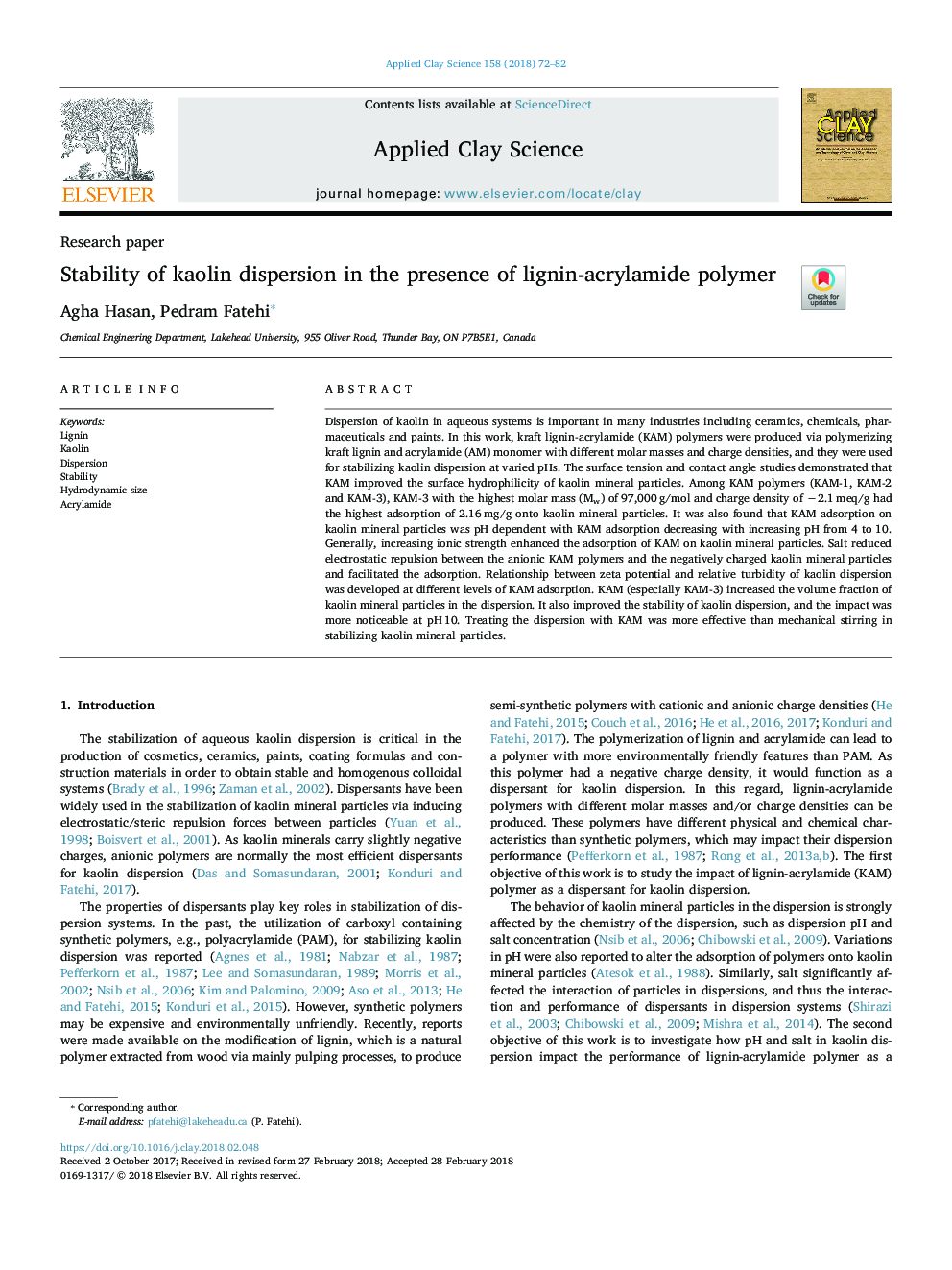| Article ID | Journal | Published Year | Pages | File Type |
|---|---|---|---|---|
| 8045962 | Applied Clay Science | 2018 | 11 Pages |
Abstract
Dispersion of kaolin in aqueous systems is important in many industries including ceramics, chemicals, pharmaceuticals and paints. In this work, kraft lignin-acrylamide (KAM) polymers were produced via polymerizing kraft lignin and acrylamide (AM) monomer with different molar masses and charge densities, and they were used for stabilizing kaolin dispersion at varied pHs. The surface tension and contact angle studies demonstrated that KAM improved the surface hydrophilicity of kaolin mineral particles. Among KAM polymers (KAM-1, KAM-2 and KAM-3), KAM-3 with the highest molar mass (Mw) of 97,000â¯g/mol and charge density of â2.1â¯meq/g had the highest adsorption of 2.16â¯mg/g onto kaolin mineral particles. It was also found that KAM adsorption on kaolin mineral particles was pH dependent with KAM adsorption decreasing with increasing pH from 4 to 10. Generally, increasing ionic strength enhanced the adsorption of KAM on kaolin mineral particles. Salt reduced electrostatic repulsion between the anionic KAM polymers and the negatively charged kaolin mineral particles and facilitated the adsorption. Relationship between zeta potential and relative turbidity of kaolin dispersion was developed at different levels of KAM adsorption. KAM (especially KAM-3) increased the volume fraction of kaolin mineral particles in the dispersion. It also improved the stability of kaolin dispersion, and the impact was more noticeable at pHâ¯10. Treating the dispersion with KAM was more effective than mechanical stirring in stabilizing kaolin mineral particles.
Related Topics
Physical Sciences and Engineering
Earth and Planetary Sciences
Geochemistry and Petrology
Authors
Agha Hasan, Pedram Fatehi,
